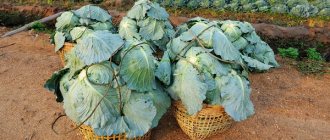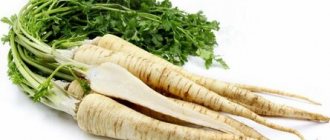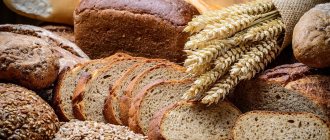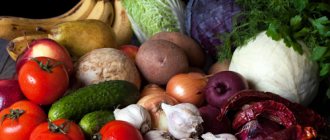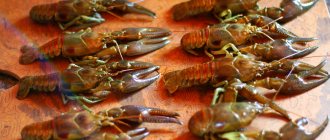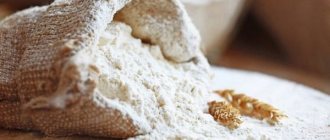Onions are highly valued in cooking and folk medicine. On the one hand, it is a product that improves and complements the taste of hot and cold dishes. On the other hand, it is a natural antibiotic with a unique composition, including a lot of vitamins, minerals, folic and pantothenic acids. Onions are excellent at fighting colds and vitamin deficiency, which is why they are stored in large quantities for the winter.
Onion varieties suitable for long-term storage
Every year, breeders create new varieties that can survive for a long period of time. Gardeners in our country, planning to save their harvest, choose the following varieties:
- "Stuttgarter Riesen": bred by German breeders, popular all over the world. It is distinguished by early ripening, large bulbs reaching a weight of 150 g and high yield. The variety is unpretentious and has good resistance to downy mildew.
- “Centurion”, “Sturon”: selection varieties of the previous variety, characterized by long storage. “Sturon” has a round shape, “Centurion” has an elongated shape. Both species have a thin neck that dries out quickly; the likelihood of developing diseases in the varieties is low.
- "Orion": the result of the work of English breeders. Each root vegetable weighs up to 200 grams. It ripens quickly, which is why it is valued by the inhabitants of Siberia.
- "Bastion": a mid-season variety grown throughout the country, except in the southern regions. The bulb is distinguished by a flat, round shape, dry scales with a dense structure, which extends shelf life.
- Yalta onion: sweet, incredibly popular. It differs in taste and requires a special approach to storage.
- Arzamas local: bred in the Nizhny Novgorod region. The nests contain up to three specimens, which have a pungent taste. Stores well and easily resists pests.
- Bessonovsky local: a pungent variety containing up to five specimens per nest. Each bulb weighs about 50 g and is distinguished by its rich yellow color. The root vegetable contains extremely little dry matter and has a long shelf life.
- "Red Baron": a bright representative of the red variety, ripens quickly, the fruits are small. Contains a large amount of ascorbic acid, so it is perfectly preserved for a long time.
When to harvest
How well the onions will be stored primarily depends on the right moment for harvesting.
It is believed that the optimal time for digging onions is from early August to early September. Naturally, the exact period depends on the climatic conditions of the region and whether the summer was dry or rainy. It is not difficult to determine whether a vegetable is ripe: its husk will easily come away from the bulb, and the feathers will dry out and turn yellow.
It is necessary to harvest on a dry day so that rain does not damage the plant. Try to select for long-term storage those specimens that do not have any damage, stains or traces of insects on their surface.
The vegetable must be ripe, otherwise it will quickly deteriorate during storage. An overripe plant should not be used for long-term storage: it begins to sprout roots and new green shoots within a month or two, which means it will become unsuitable for cooking.
Experienced gardeners know that late-ripening varieties are best stored. And early and sweet ones, such as the Yalta variety, are not very suitable for storing for the winter.
The new crop should be stored in a dry and cool place, away from direct sunlight. If the humidity is too high, the bulbs will quickly begin to rot.
You can also grow this plant for the next season using nigella - onion seeds. They are black in color, which is why they got their name. It is necessary to wait until the plant is completely ripe, and then cut off the inflorescences and leave them to dry. It is better to store arrows with seeds in a dry place: this way they will be easily separated.
Read more about methods of growing onions in our article.
Preparing onions for long-term storage
The keeping quality of root crops depends on agricultural technology. When nitrogen fertilizers are actively applied, the ripening period increases, while the dormant time decreases, which is why the plant germinates quickly. If you reduce the amount of these fertilizers, the shelf life will increase and the taste of the product will improve.
Heavy rains during the growing season negatively affect the ripening period and the keeping quality of the vegetable.
Rules for growing and harvesting onions:
- observe crop rotation;
- dig up the onions when about half of the foliage has disappeared;
- Carry out cleaning work during established warm weather;
- after digging, remove any remaining wet soil from the surface;
- Do not tap the vegetables off the ground, this will damage their integrity, where rot will then form.
Ripe fruits have dense, thin scales, an unformed neck, weak, soft; on the contrary, they contain moisture, which interferes with its storage.
Preparing onions for storage:
- Dry the bulbs and spread them on a dry surface in a thin layer. Drying time is two weeks. In good weather, the process is carried out outdoors; in bad weather, where there is enough ventilation.
- Use the oven to dry: heat the oven to 50 °C, turn it off. Place the onion, previously peeled from the soil, into the oven.
- After drying, trim about 5 cm from the neck and root. Try not to damage the fruit.
- Sort the onions, select dried and dense specimens. Wet vegetables with green necks, soft vegetables with visible damage, use immediately.
- If the onion grew in rainy weather, remove the scales from it before drying. During this process it will become skinned again.
Preface
The goals, basic principles and basic procedure for carrying out work on interstate standardization are established in GOST 1.0-2015 “Interstate standardization system. Basic provisions” and GOST 1.2-2015 “Interstate standardization system. Interstate standards, rules and recommendations for interstate standardization. Rules for development, acceptance, updating and cancellation"
Standard information
1 PREPARED by the Autonomous non-profit organization “Research Center “Kubanyagrostandart” (ANO “SRC “Kubanyagrostandart”)” based on the Russian version of the standard specified in paragraph 5
2 INTRODUCED by the Federal Agency for Technical Regulation and Metrology
3 ADOPTED by the Interstate Council for Standardization, Metrology and Certification (protocol dated September 25, 2022 N 103-P)
The following voted for adoption:
| Short name of the country according to MK (ISO 3166) 004-97 | Country code according to MK (ISO 3166) 004-97 | Abbreviated name of the national standardization body |
| Armenia | A.M. | Ministry of Economy of the Republic of Armenia |
| Belarus | BY | State Standard of the Republic of Belarus |
| Kazakhstan | KZ | Gosstandart of the Republic of Kazakhstan |
| Kyrgyzstan | KG | Kyrgyzstandard |
| Russia | RU | Rosstandart |
4 By Order of the Federal Agency for Technical Regulation and Metrology dated November 28, 2022 N 1844-st, interstate standard GOST 34306-2017 “Fresh onions. Technical Specifications” came into force as a national standard of the Russian Federation on July 1, 2022.
5 This standard is modified in relation to the UNECE STANDARD FFV-25:2010 concerning the marketing and commercial quality control of onions (“Concerning the marketing and commercial quality control of onions”, MOD), by introducing changes to the content of sections 2, 3, individual structural elements and words in sections 1, 3-6, highlighted in italics in the text. This standard is supplemented by sections 7, 8 and bibliography.
The UNECE STANDARD FFV-25:2010 standard was adopted at the 66th session of the Working Group on Agricultural Quality Standards of the UN Economic Commission for Europe.
The name of this standard has been changed relative to the name of the specified standard UNECE STANDARD FFV-25:2010 to bring it into compliance with GOST 1.5 (subsection 3.6).
Official copies of the UNECE STANDARD FFV-25:2010 concerning the marketing and commercial quality control of onions, on which this standard is based, are available on the UNECE website https://www.unece.org/trade/agr/standard/fresh/ffv- standardse.html.
The contents of Section IV of the UNECE STANDARD FFV-25:2010 regarding the excluded term “products subject to degradation” are given in Additional Appendix YES.
A comparison of the structure of this standard with the structure of the UNECE STANDARD FFV-25:2010 standard applied in it is given in the additional appendix DB.
Information on the compliance of reference interstate standards with international standards is given in the additional appendix DV.
This standard has been prepared on the basis of the application of GOST R 51783-2001* ________________ * By Order of the Federal Agency for Technical Regulation and Metrology dated November 28, 2022 N 1844-st GOST R 51783-2001 “Fresh onions sold in retail chains. Technical conditions” was canceled from July 1, 2018.
6 INSTEAD GOST 1723-86 regarding fresh onions supplied for fresh consumption
(Amendment. IUS No. 4-2018).
Information about changes to this standard is published in the annual information index “National Standards”, and the text of changes and amendments is published in the monthly information index “National Standards”. In case of revision (replacement) or cancellation of this standard, the corresponding notice will be published in the monthly information index “National Standards”. Relevant information, notices and texts are also posted in the public information system - on the official website of the Federal Agency for Technical Regulation and Metrology on the Internet (www.gost.ru)
Onion storage conditions
How to dry onions after harvesting?
When the crop is harvested, it is dried:
- lay the bulbs in rows on top of the cleared soil;
- leave the vegetables for a couple of days (provided there is no precipitation);
- Harvest the crops in the attic, where it is dry and warm and has ventilation;
- to achieve complete drying of the feathers and roots, bend the neck of the onion (hang on a rope, place the necks on the edges of the box);
- determine readiness by the thinning, yellowing of the neck;
- if the onion was collected during the rain, remove a couple of the top layers of scales from it, cut the roots to 2 cm;
- 3 weeks later, after turning the necks into dry ponytails, leave small ends necessary for braiding;
- trim the roots by a centimeter;
- Store braided vegetables placed inside boxes.
Storability of onion
The shelf life of root crops depends on the following factors:
- variety: early ones are suitable for food and preparations;
- weather during ripening: rain reduces the shelf life, increased moisture content provokes the development of putrefactive processes;
- orientation to the rules of agricultural technology;
- compliance with harvesting deadlines: early and late start of the process can affect the shelf life of the product (optimally - the end of July).
At what temperature should onions be stored?
- Cold mode: -3 – 0 °C. Characterized by low losses and breathing intensity.
- Warm mode: 18–22 °C, with humidity around 70%.
- Combined mode: before the onset of autumn cold, keep the temperature at 18–22, after -3 to 0 degrees. After the thaw, transfer the root vegetable to the warm method again. On average, the shelf life ranges from 60 to 270 days.
Humidity
Relative humidity depends on temperature:
- cold method – 75–90%;
- warm method – 70%.
Air circulation
To prevent the development of rotting processes during storage of root crops, monitor the constant circulation of air masses. The accumulation of carbon dioxide released by the onion during breathing interferes with it while lying down. Therefore, she needs to be taken out of the room in time.
Equip the storage location with a ventilation system to maintain uniform air temperature and humidity. Lack of proper air exchange will lead to the development of rotting processes and shorten the shelf life of vegetables.
The winter period requires a reduction in the circulation flow to 50% of the main one. If temperature or humidity indicators deviate, arrange periodic, forced circulation.
Ripening time
Onions ripen in mid-summer, in July. The best time to harvest is when the stem falls by more than half, namely ¾. In other plants, the leaves still remain green, but the presence of scales can also be seen.
Stop watering at the moment when the stem falls to a third of its height. This amounts to a period of approximately 14 days before digging.
Attention:
It is very important how exactly the harvest occurs. Under no circumstances should you forcefully pull the bulbs out of the ground. First, they make a dig so as not to injure the fruits.
When the onions are harvested, the fruits are laid out in a well-lit sunny place. In the absence of precipitation, they are dried in an open place, and in the presence of rain, they are placed under canopies. Drying time is 14 days. This time is enough for the onion to dry well, the peel to become hard and acquire a certain color. The color of the skin depends on the type of onion. It can be golden, brown, rich dark red.
INTERESTING!
The best varieties of spinach for open ground with photos and descriptions
Attention:
It is impossible to collect onions during the rain. The collected onions must be dry.
How to store onions in an apartment
When deciding to store onions in a city apartment, take into account a number of requirements for containers for storing vegetables. Wooden, polyvinyl chloride, and glass containers have different effects on the shelf life of the product.
Boxes
Wooden and plastic boxes equipped with ventilation holes are an excellent storage place. A good option is made from thin planks, knocked down at intervals of about 5 cm. A solid bottom and walls are allowed, with the obligatory subsequent drilling of holes there.
The use of boxes has an important advantage: they save free space when installed one on top of the other.
Carton boxes
Boxes made of thick cardboard remain from purchased household appliances, shoes and other things. Make ventilation holes on their surface to optimally arrange the vegetables.
Baskets made of wicker
Baskets woven from wicker are suitable for storing onions. The main thing is that they are shallow, otherwise the specimens located in the middle will rot.
It is better to choose several baskets, each with a volume of up to 5 liters. To increase the shelf life of the bulbs, fill the space between them with sawdust, dried grass (nettle), and onion peels.
Fabric bags
Linen bags, make from:
- flax;
- burlap;
- cotton
Onions keep well throughout the winter in small bags with a capacity of up to 5 kg. Such a container can be easily placed in the kitchen so that you don’t have to go to the basement every day for a small portion of onions while cooking.
Thick paper bags
Thick paper has excellent ventilation, completely preserving the harvest. The same rules apply here as for linen bags.
Polypropylene mesh
The most common option is polypropylene mesh. They do not impede air circulation at all. If signs of rotting appear in one of the vegetables, it is easy to detect and remove it from the rest.
Where and how to store onions?
Having sorted out the container for storing turnip onions, you need to find the optimal place to place it. It is allowed to create storage in the cellar, temporary storage in the refrigerator and other places.
How to make braids from bows for storage
This option is optimal: during weaving, the neck of the onion is pinched, due to which it ceases to be supplied with moisture and dries out to the required degree. Technology of weaving “onion” braids:
- take the onion;
- tie twine to it, ropes previously folded in half;
- use tops and rope to weave a braid;
- trim the roots;
- after finishing weaving, secure the edge and finish by creating a loop;
- hang the braid from the loop to the wall.
The method is optimal for long-term storage; root crops are constantly ventilated and, if necessary, cut with scissors.
Cellar
Vegetables are stored especially well here; the main thing is to properly prepare the room and the product.
Rules for storing in the cellar:
- clean and ventilate the room;
- put the onions in boxes, do not make a layer higher than 30 cm;
- check the humidity level (up to 75% is acceptable);
- Please note: you cannot place unslaked lime next to it;
- To absorb excess moisture, place a container with sawdust or sand;
- sprinkle the vegetables with wood ash, it will reduce the likelihood of rotting processes.
Freezer and refrigerator
The freezer is a great place to store onions for a long time.
Storage Features:
- Peel the dried product and rinse under running water;
- cut into cubes or rings;
- fold inside a bag or airtight container;
- place in a chamber with a temperature of -3 degrees;
- defrost the amount needed for cooking (re-freezing is excluded).
In addition to the freezer, the root vegetable keeps well in the refrigerator. First remove the top layer and put it in a paper bag. Place the bag in the vegetable tray. The method is convenient, but it will not allow you to add a large amount of product.
Is it possible to store onions with apples?
Storing onions and apples together is strictly prohibited. Fruits actively release ethylene during storage. This substance causes active bolting of the bulbs, so the root crop quickly becomes unusable.
Basic Rules
What are the storage conditions for onions? How to prepare onions for storage:
- all bulbs for storage must be strong and healthy ;
- The onions need to be dried . You can do this right in the garden, in bad weather, under a canopy. Braid the onion and hang it to dry. For apartments there is a way to dry onions in the oven , the temperature should not be high, you can easily overdry;
- remove wilted greenery, leaving 4 - 6 cm, the roots must also be trimmed;
- lightly peel the root crop from the top cracked scales;
- It is advisable to dry it for at least two weeks , constantly moving it.
Onions: how to prepare for long-term storage? About the timing of harvesting onions for storage and methods of preparing them in this video:
Reasons for onion spoilage during storage
There are different reasons for the development of decay processes. Among them are:
- high level of humidity;
- incorrectly selected packaging material, containers (plastic bags provoke the greenhouse effect);
- mechanical damage that introduces bacterial or other rot inside.
Careful handling of vegetables can prevent further spoilage.
Tips for preserving onions without rotting:
- Store onions in a mesh that allows air to pass through.
- Sprinkle the vegetable with husks, which protect the product from drying out and absorb excess moisture.
- To reduce the level of humidity in the room, place boxes with ash and dry sand.
- Remove specimens with signs of rot in a timely manner.
- Use a small container.
- Before planting, treat the seedlings with a solution of potassium permanganate.
- Plant onions where cabbage and cucumbers grew last season.
- Do not store bulbs with weak necks.
- Choose varieties specially bred by breeders for storage.
Bibliography
| [1] | TR TS 021/2011 | Technical Regulations of the Customs Union “On Food Safety” |
| [2] | TR TS 005/2011 | Technical Regulations of the Customs Union “On Packaging Safety” |
| [3] | TR TS 022/2011 | Technical Regulations of the Customs Union “Food products regarding their labeling” |
| [4] | 76/211/EC | Directive of the Council of the European Communities of 20 January 1976 (76/211/EC) “On the approximation of the laws of the Member States concerning the pre-packaging of certain products by weight or volume per unit of prepackaged products” |
Find anything else?
Site Map
Demand factor 209
How to keep onions from pests
Various pests encroach on the safety of vegetables. To prevent infection, you need to know the main signs of pest infestation.
Common onion pests:
- Tobacco thrips: a small pest that sucks the sap from plants, causing silvery spots to cover the foliage. It affects the scales, making them net-wrinkled and covered with light spots. To prevent infection, ventilate the room more often and store vegetables in the dark.
- Gray neck rot: appears a month and a half after being placed in the cellar. It is expressed by the appearance of depressed spotty formations that soften greatly over time. Infection occurs during or before cleaning. Onions with a dry neck are less likely to become infected.
- Bacterial rot: develops during storage or in the beds, causing softening of the vegetable and the appearance of an unpleasant odor. The infection is spread by insects. Remove affected specimens in a timely manner and ventilate the room.
Pest control rules:
- follow the principles of crop rotation;
- arrange beds on hills;
- apply phosphorus fertilizers when planting;
- actively warm up the planting materials;
- After trimming the leaves, leave a long neck;
- Dry the product thoroughly before storing;
- keep vegetables in the dark, with a temperature of 1 to 3 degrees;
- periodically check vegetables and remove infected ones;
- Don't peel onions unless necessary.
Which bulbs can be left for the winter?
It is better to leave onions sown directly in open ground for the winter. First of all, you should choose the highest quality bulbs for storage. Storing a large harvest sometimes becomes a problem for gardeners and farms specializing in the production of this vegetable. Small volumes grown on a farm or in a country house do not cause such troubles.
Onions intended for long-term storage must have:
- a healthy mature, well-formed head with a thin, dry neck;
- properly colored dry cover scales corresponding to the specific variety;
- densely located fleshy scales (good hardness);
- positive varietal characteristics regarding storage duration (delayed germination of feathers and roots).
Onions of good quality, without mechanical damage, in a dark, cool, dry place, depending on the variety, are stored for 6-8 months without loss of properties.
How to process onions for storage
It is allowed to store root vegetables not only unchanged. Some housewives prefer its initial processing, including cleaning, slicing, and frying. This method makes it easier to later work with the vegetable, but does not involve storing large quantities.
Storing fried onions
Place the onion, pre-fried with refined oil, in a plastic or glass container. Place the container in the refrigerator. Shelf life up to 6 days.
Storing Cleaned Heads
Cleaned heads have to be put away when they are infested with pests or rot. This method allows you to save a large amount of product from disposal.
After cleaning, the heads are put into a suitable container and placed on a refrigerator shelf. They should be used within a few days.
Pickling
Marinating extends the shelf life of onions.
- peel the bulbs;
- wash and cut;
- place tightly in glass jars;
- add spices;
- pour marinade;
- cork;
- store in a cold place (basement, refrigerator).
Drying
It is more convenient to store small specimens after drying them. For drying use:
- electric dryers;
- microwaves;
- oven.
Drying technology:
- Clean the bulbs.
- Rinse under running water.
- Cut into medium pieces.
- Fill the baking sheet with vegetables (in one layer).
- Place in the oven (drying device) for 3 hours, maintaining a temperature of 60 degrees.
- Make sure that the product does not burn.
- When using the microwave, place the pieces between two napkins. Turn on the maximum mode for 4 minutes.
- Cool the finished product, put it in fabric bags or in a wooden container.
